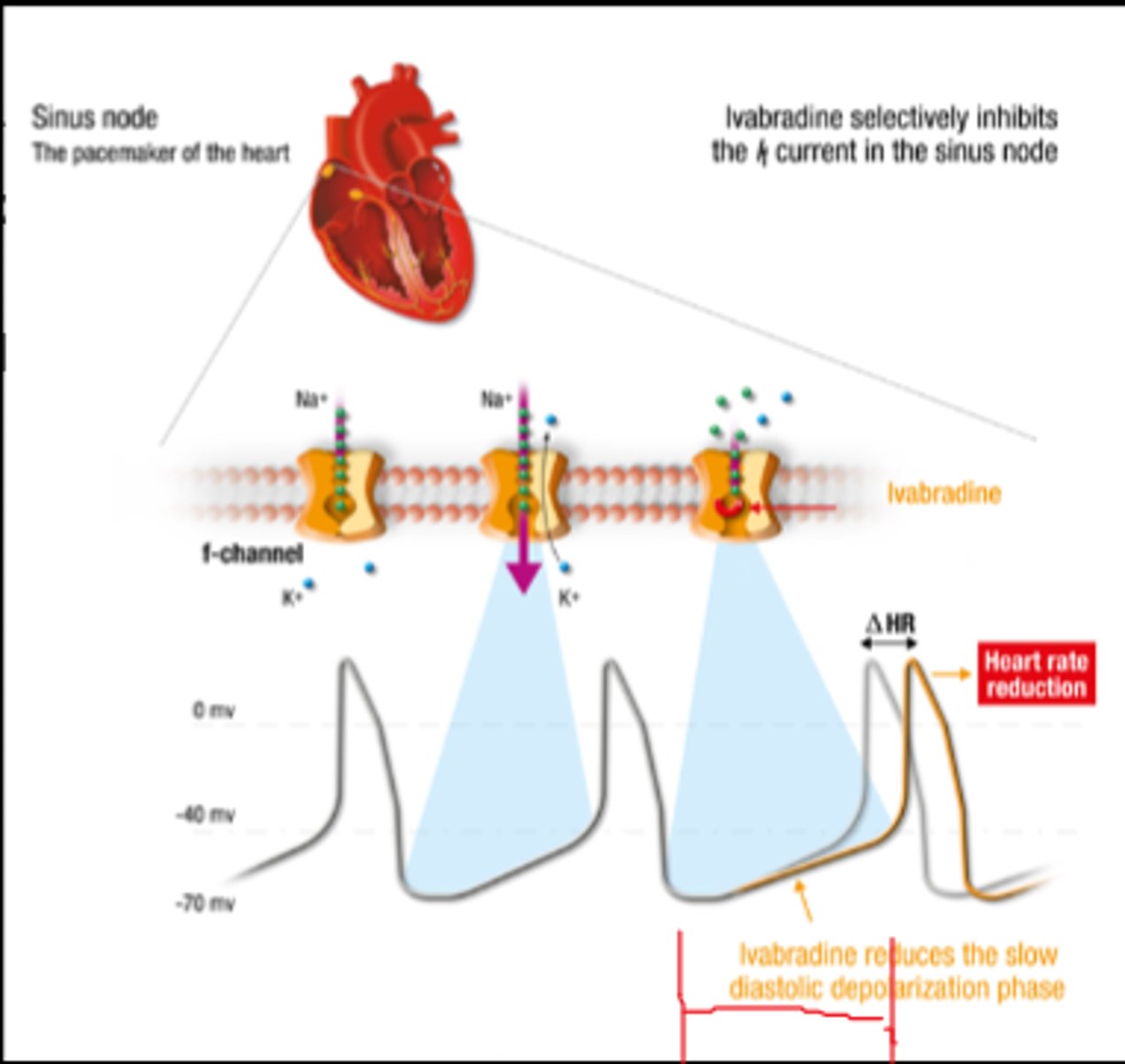Unit A 12 Phys, Diagram of an Autorhythmic Cell Action Potential
1/11
There's no tags or description
Looks like no tags are added yet.
Name | Mastery | Learn | Test | Matching | Spaced |
|---|
No study sessions yet.
12 Terms
1
What number on the diagram represents threshold?
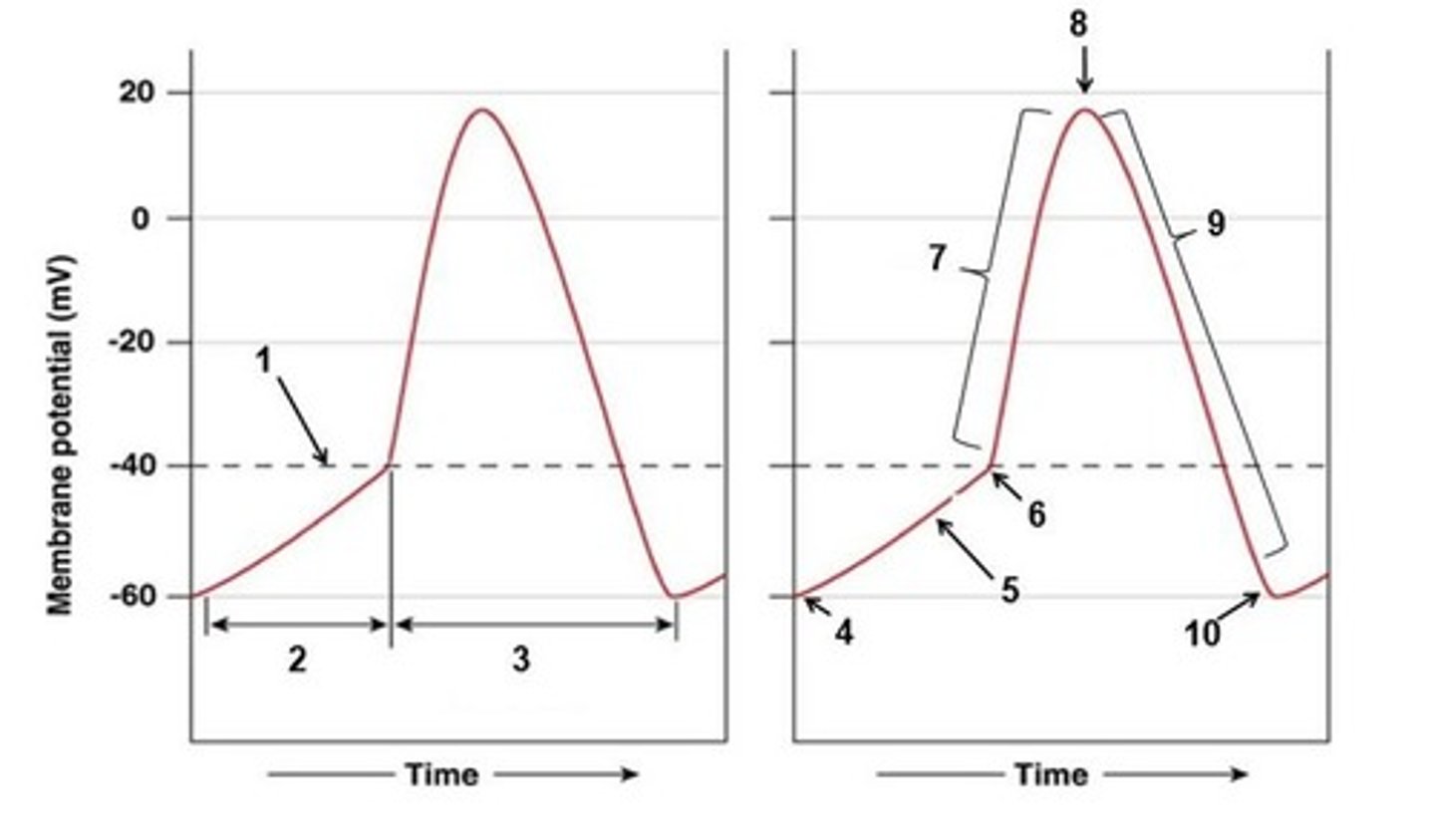
2
What number on the diagram represents the pacemaker potential?
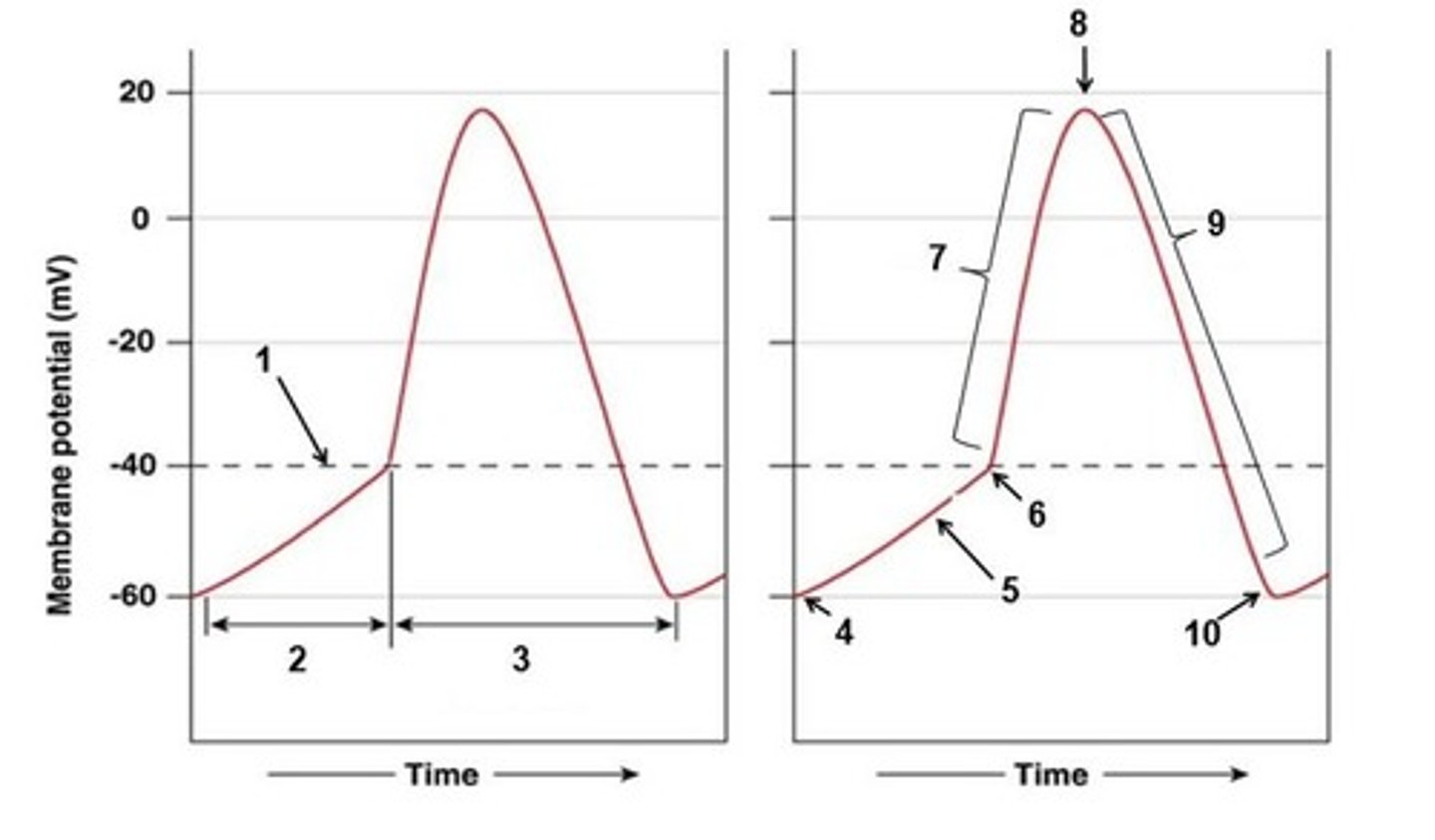
3
What number on the diagram represents the action potential?
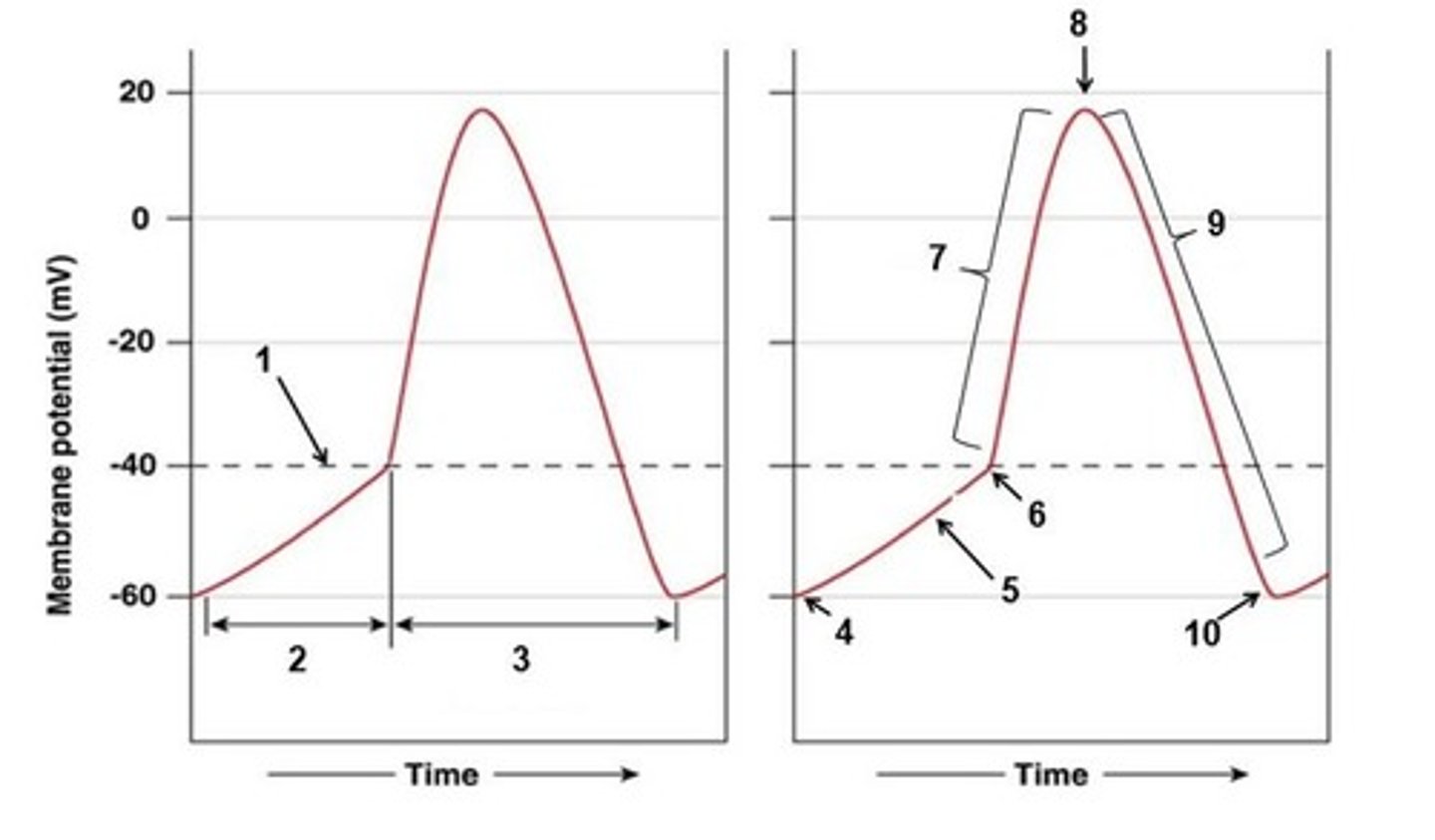
4
What number on the diagram represents where voltage gated sodium channels (Funny or HCN channels) open, net movement of Na+ into cell? This is the start of Pacemaker Potential Phase
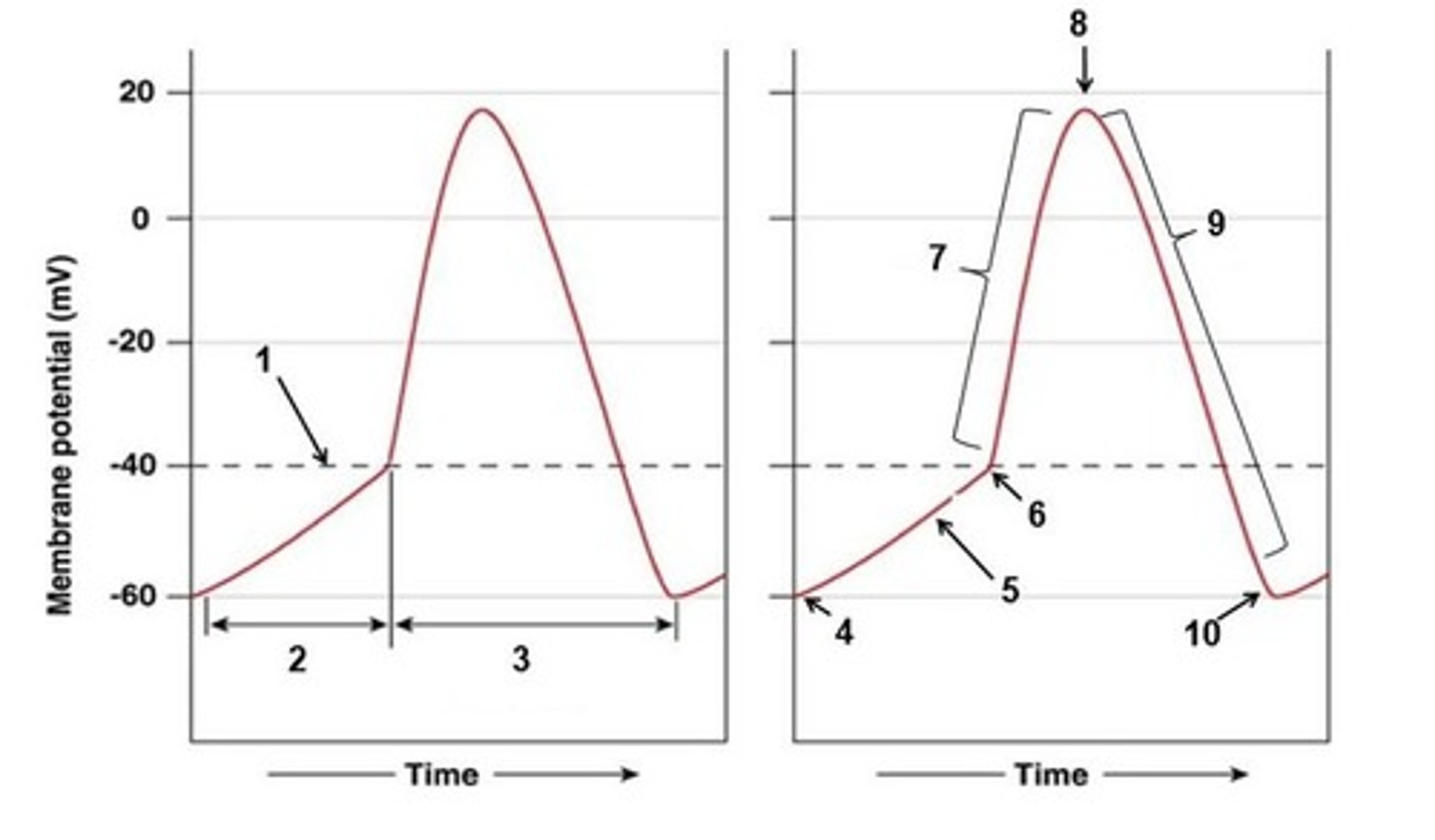
5
What number on the diagram represents where voltage gated T-type Ca2+ channels open, Ca2+ moves into cell, voltage gated sodium channels close?

6
What number on the diagram represents where T-type Ca2+ channels and voltage gated Na+ channels close as L-type Ca2+ channels open?
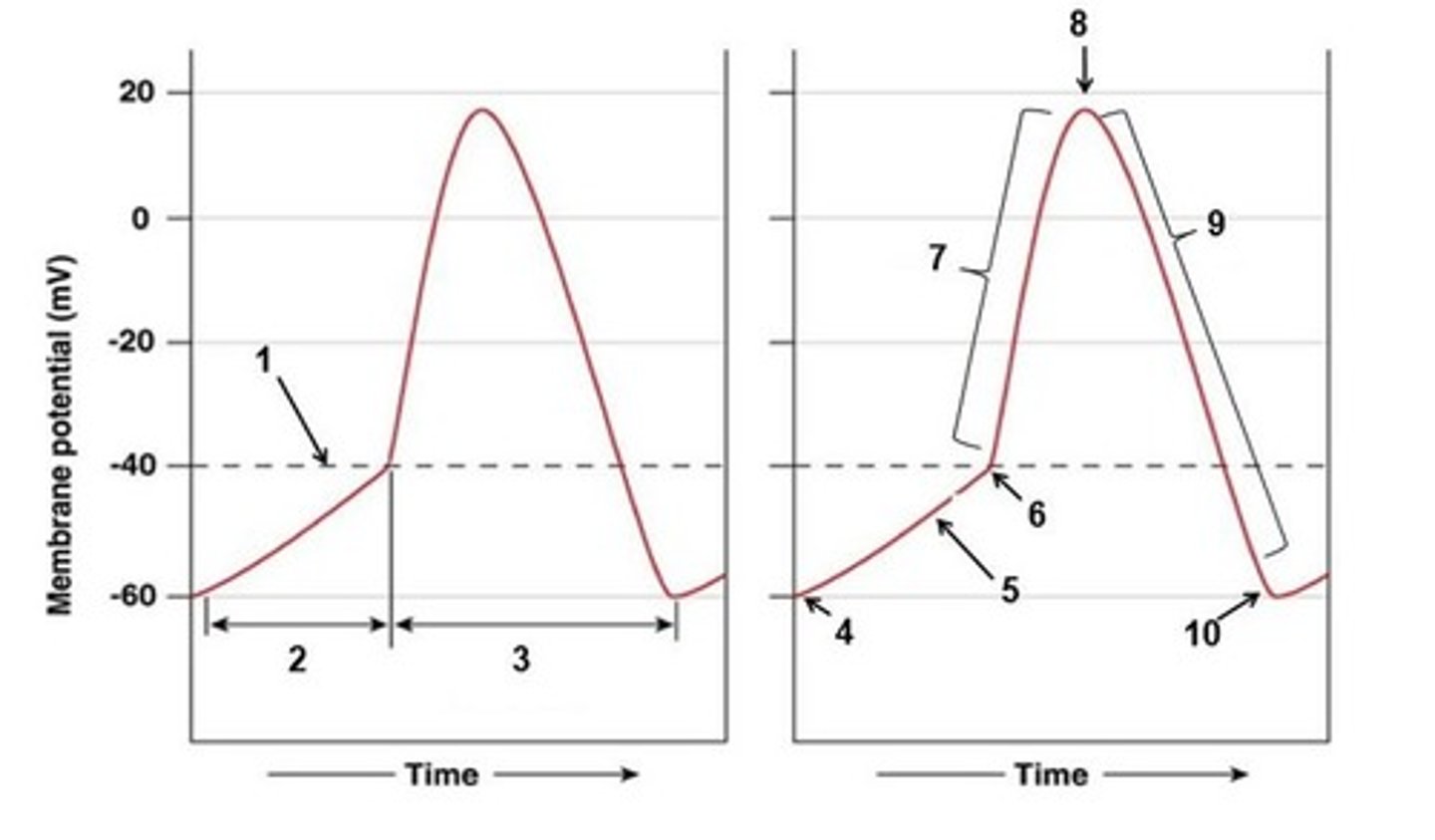
7
What number on the diagram represents where L-type Ca2+ channels open, Ca2+ moves into the cell? This is the depolarization phase of the action potential
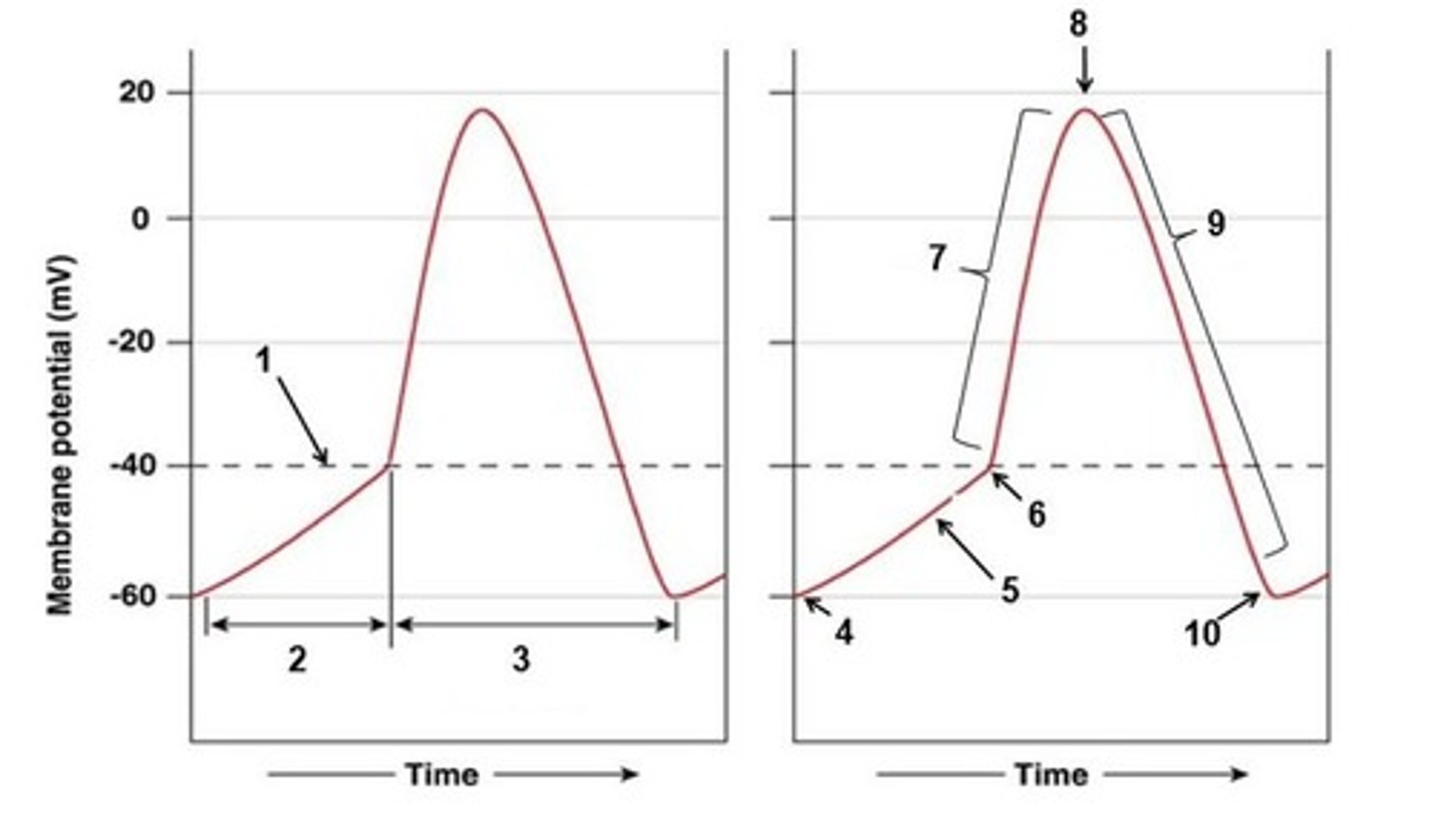
8
What number on the diagram represents where voltage gated L-type Ca2+ channels shut, voltage gated K+ channels open?
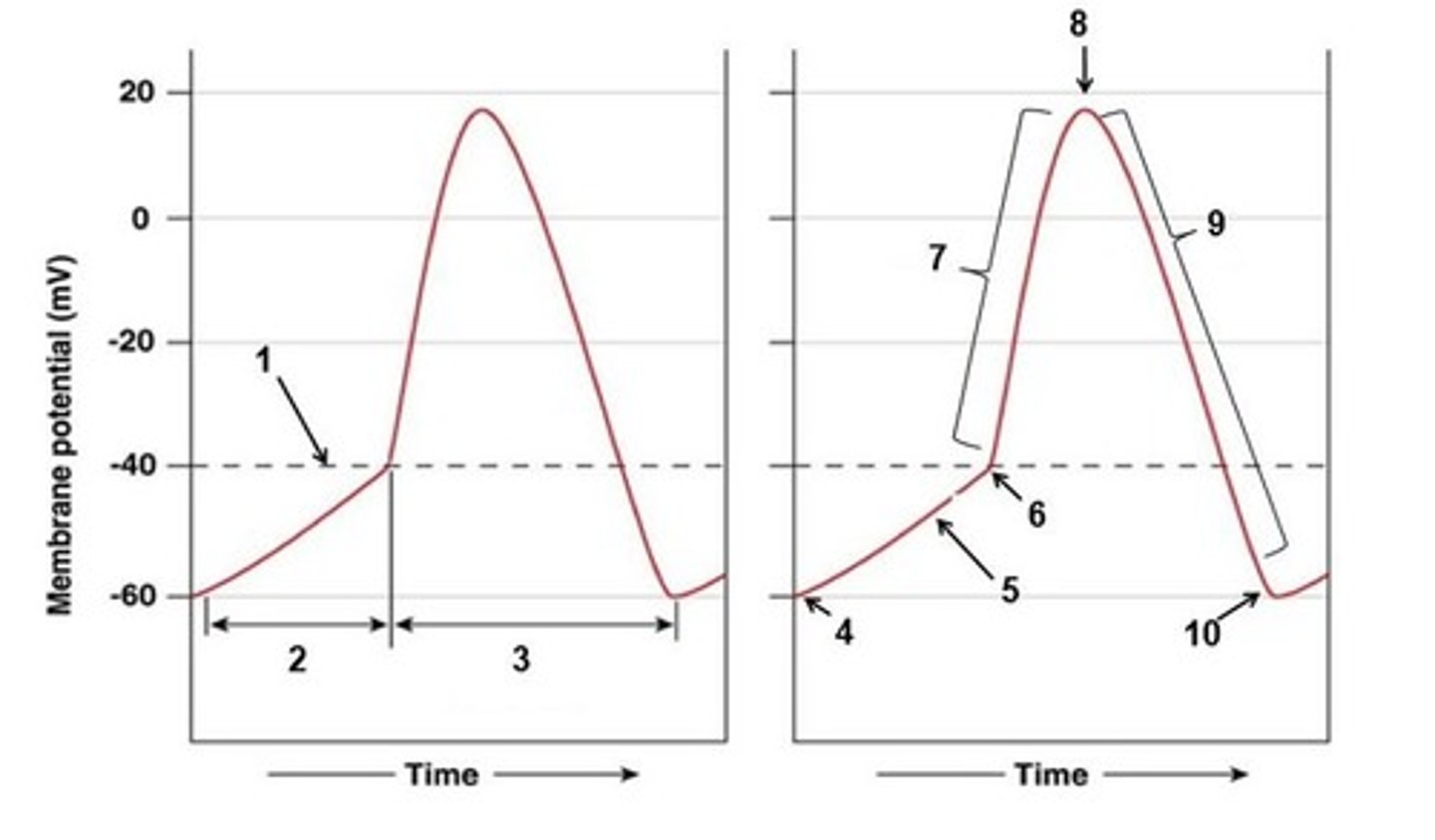
9
What number on the diagram represents where voltage gated K+ channels open, K+ moves out of the cell. This is the repolarization phase of action potential?
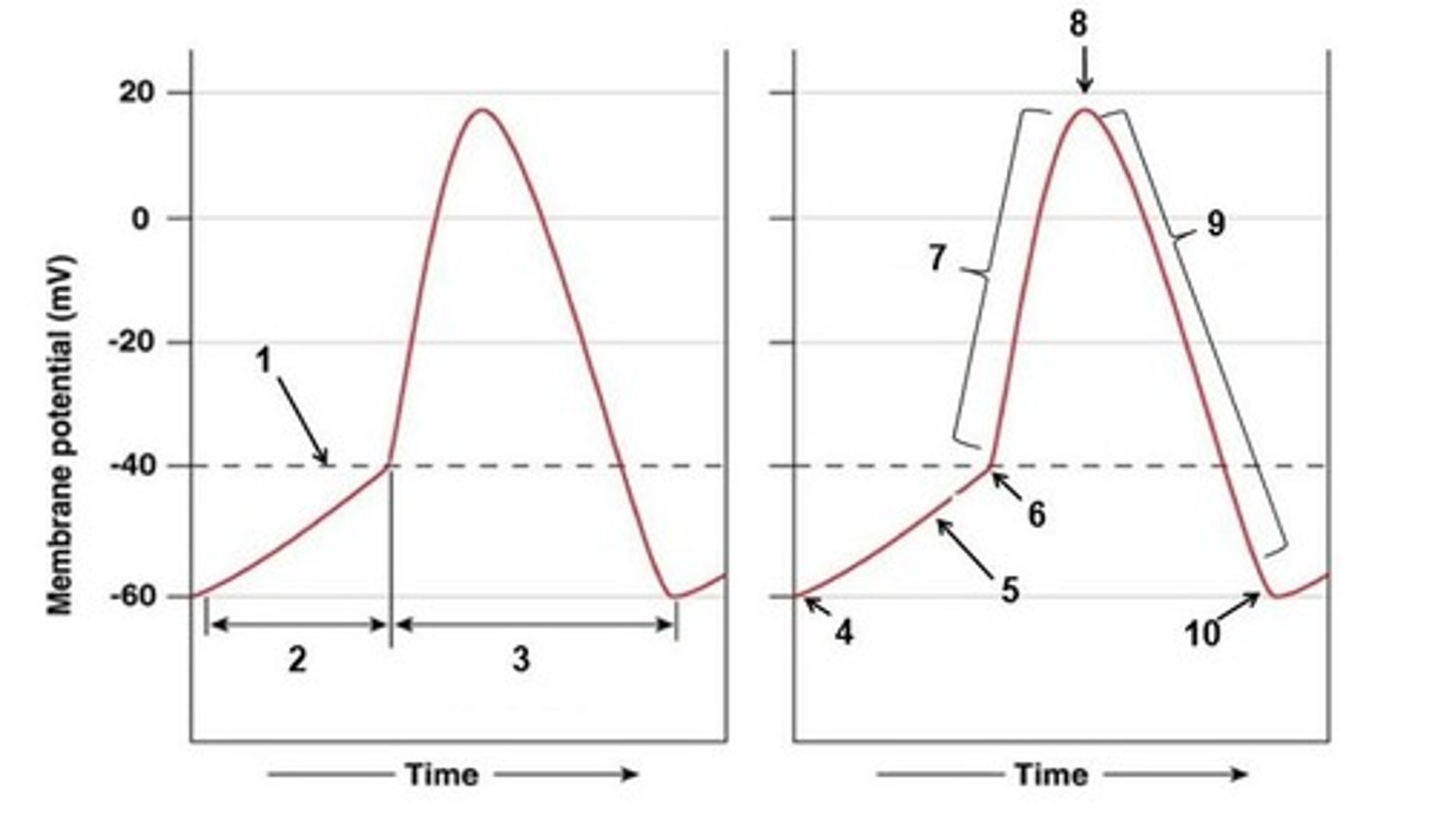
10
What number on the diagram represents where voltage gated K+ channels close?
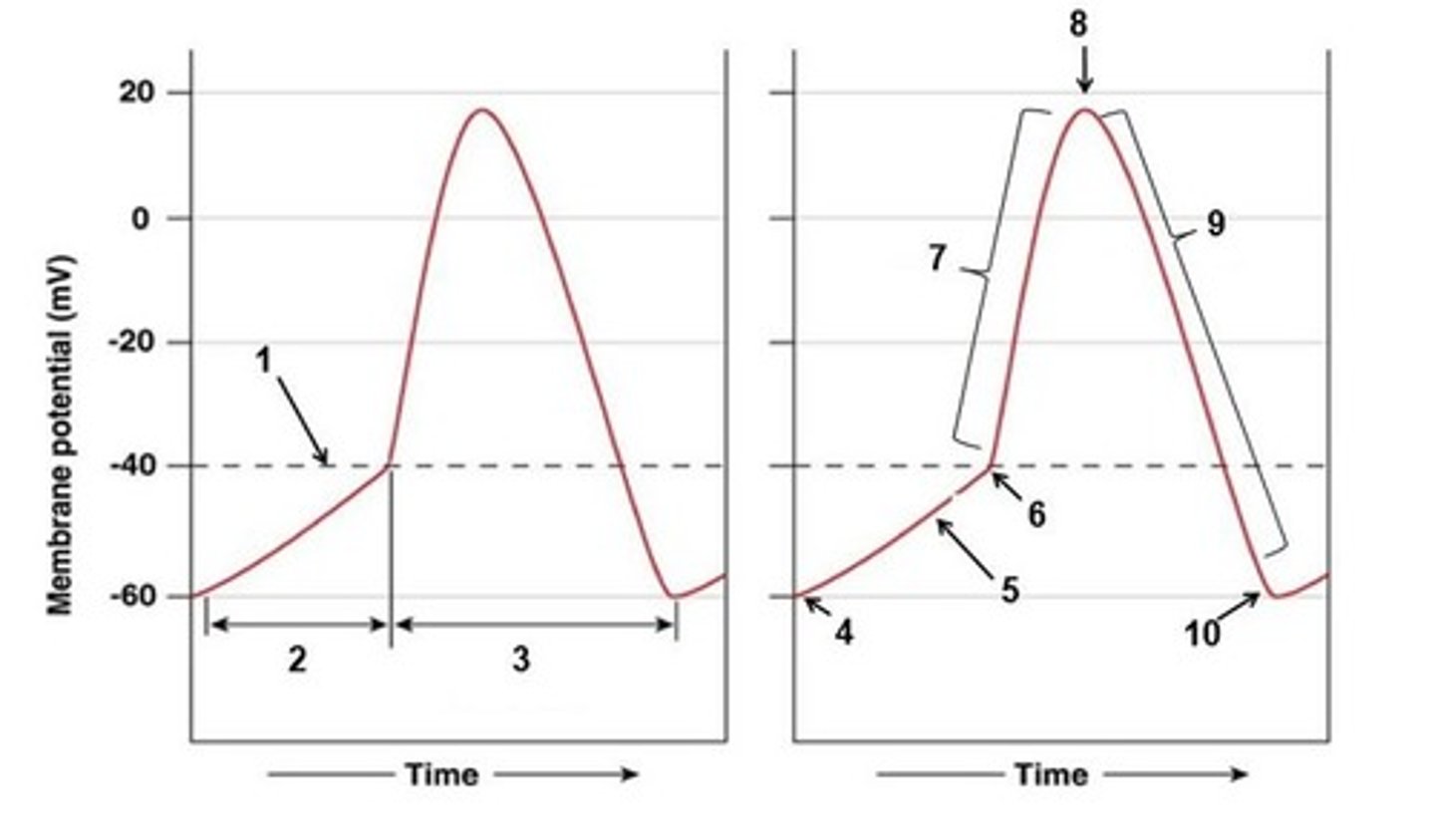
Funny channels.
During diastole the autorhythmic cell starts out as being hyperpolarized (-60 mV) as a result of the preceding action potential. This hyperpolarization opens special voltage-gated Na+ channels which are also known as HCN channels or ____________________. Give complete name of channels
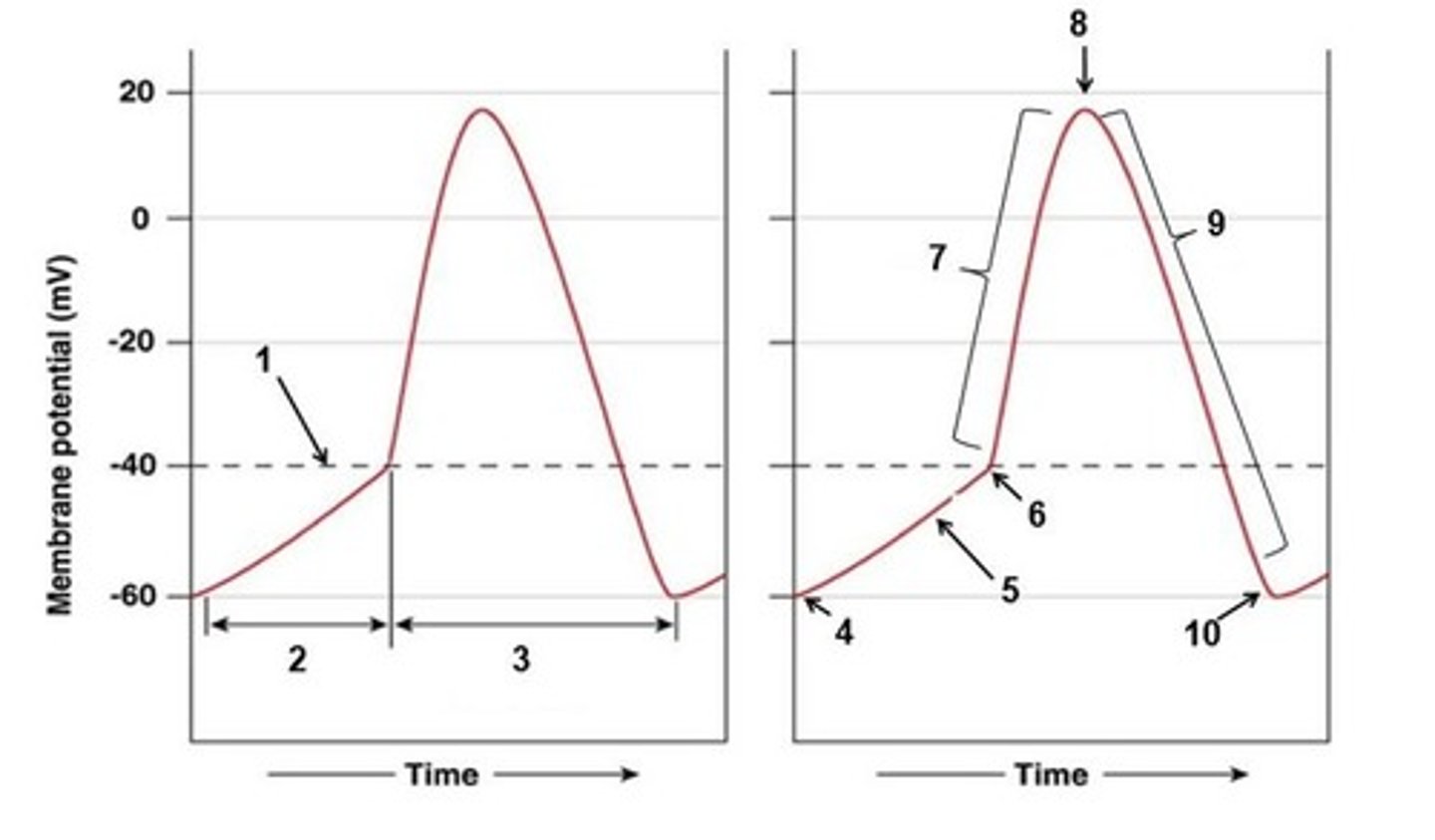
Hyperpolarization activated cyclic nucleotide gated channel
The abbreviation HCN stands for what?
